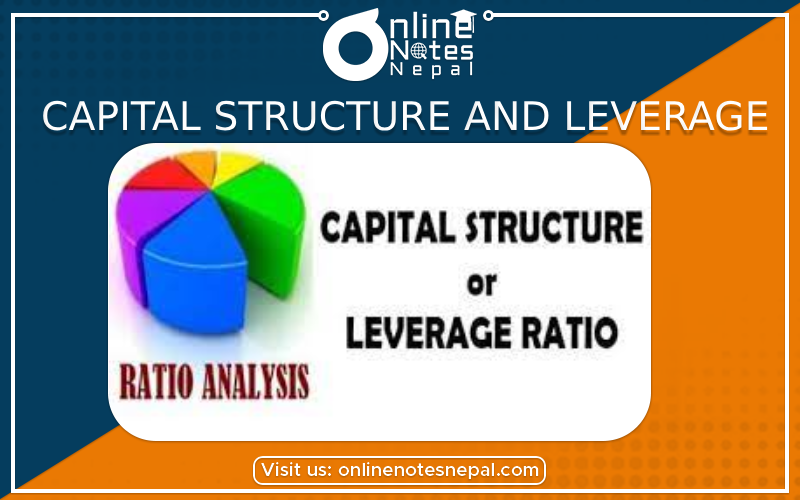Published by: Anu Poudeli
Published date: 06 Jul 2023

The capital structure of a corporation refers to how it finances its operations and investments through a combination of debt and equity. It indicates the proportion of various sources of capital utilized to finance a company's assets, such as loans, bonds, and shareholders' equity. Leverage, on the other hand, refers to the use of borrowed money (debt) to raise an investment's prospective return.
Capital structure decisions have a significant impact on a company's financial risk, profitability, and total worth. When considering capital structure and leverage, keep the following points in mind:
1.Debt and equity: Debt and equity instruments are used by businesses to raise finance. Debt is the borrowing of funds from external sources such as banks or bondholders, and corporations are required to repay the borrowed amount with interest.Shareholders that invest in the company in exchange for shares often have equity, which signifies ownership in the company.
2. Cost of Capital: The cost of capital is the average rate of return required by a corporation to pay its investors for the risk associated with their investments. Debt often has a cheaper cost of capital than equity due to tax advantages and lower risk for lenders. To compensate shareholders for the greater risk they face, equity requires a higher rate of return.
3.Financial Risk: A company's capital structure influences its financial risk profile. Higher debt levels raise financial risk since businesses must make regular interest payments as well as repay the principal amount. If a firm fails to pay its debt obligations, it is declared bankrupt.Lower debt levels, on the other hand, lessen financial risk but may limit growth potential.
4.Return on Investment and Leverage: Leverage is the use of debt to increase the potential return on investment. Companies can improve their profitability and return on equity by borrowing capital at a lower cost than the return on investment. Excessive leverage, on the other hand, can increase losses in the event of poor performance or an economic crisis.
5. Flexibility and Control : Capital structure decisions have an impact on a company's flexibility and control. Companies can raise capital without incurring debt obligations by issuing equity, but it dilutes existing shareholders' ownership and influence. Debt financing gives existing owners more power while increasing the company's financial liabilities.
6.Market Conditions and Investor Perception: Market conditions and investor perception influence capital structure selection. Investors evaluate a company's capital structure in order to determine its risk profile, stability, and potential to generate returns. Interest rates and investor preferences can influence the cost and availability of debt and equity funding.
7.Optimal Capital Structure: Finding the correct balance of debt and equity to maximize the company's value is the goal of determining the optimal capital structure. Profitability, growth potential, cash flow stability, and industry standards all influence optimal capital structure across industries and organizations.
8.Capital Structure Ratios: Financial ratios such as debt-to-equity, debt-to-equity, and interest coverage ratios provide information about a company's capital structure and financial health. These ratios aid in determining leverage, financial risk, and the ability to satisfy debt obligations.
It is crucial to remember that capital structure decisions are complex and are influenced by a variety of factors that are unique to each organization. When deciding on capital structure and leverage, financial managers, executives, and stakeholders carefully assess these aspects and weigh trade-offs.